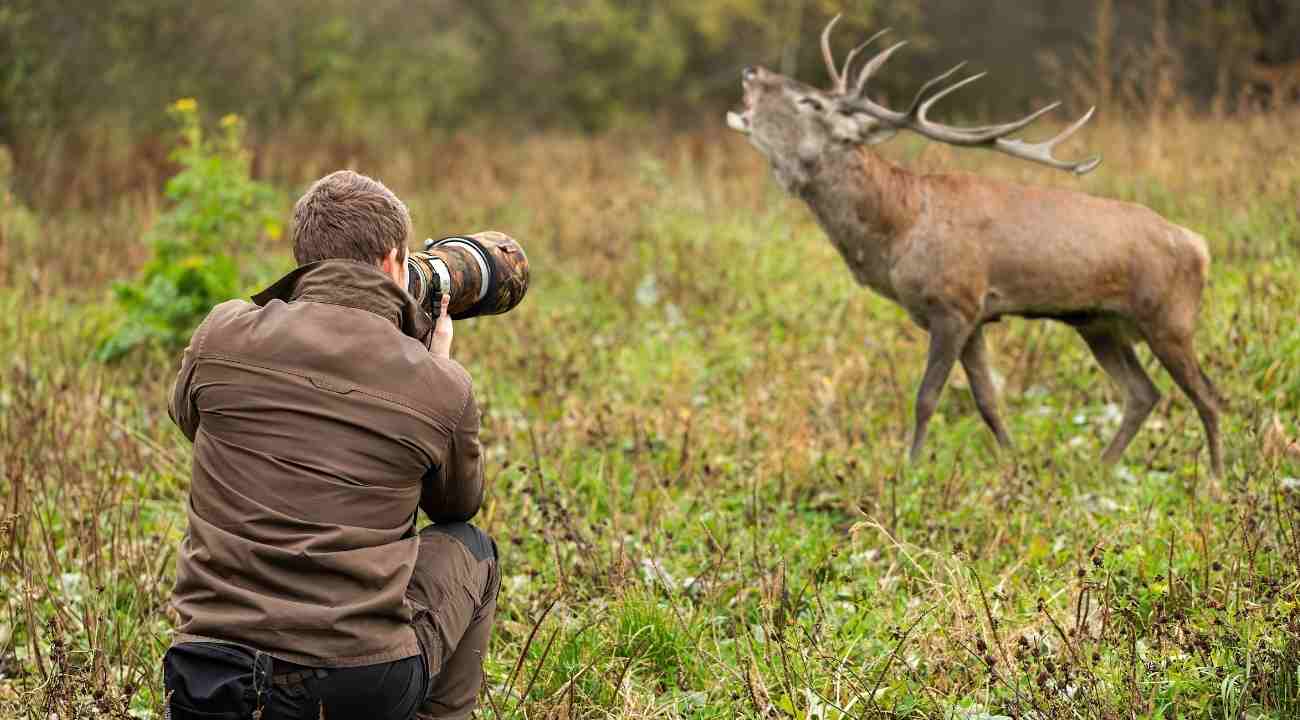Wildlife shooting is fascinating yet challenging. And it gets even more difficult when you don’t have the right kind of equipment in your hands. And to most wildlife shooters, the lens is the most crucial gear. But how do you choose the right lens? In this article, we are going to guide you step by step so that you can choose the right lens for your wildlife shooting. So with that being said, let’s get started.
Focal Length
One of the most crucial factors when buying a wildlife lens is the focal length. Usually, lenses with a longer focal length are preferred when you are shooting for wildlife, as you might want to keep a safe distance. Besides, there is also some hard-to-reach situation, and for those reasons, you need longer focal length lenses.
If you are planning to shoot birds, it is recommended that you use a lens with at least 400 mm focal length. And if you have the budget, you can go as high as 600mm or even 800mm. However, if you are into shooting animals on the ground, a 200mm would be a good starting point, as it would be more affordable.
Zoom Lens or Prime Lens?
Another dilemma when shooting wildlife is whether to take a zoom lens or a prime lens. Most of the zoom lenses come with a variable aperture. It works just fine when you shoot using the minimal focal length of a zoom lens. But as you zoom all the way, the aperture gets narrower, limiting lights and many other shooting possibilities.

There is another notion about zoom lenses that the zoom lenses are not as sharp as the prime lenses. There are also zoom lenses that are better than their prime counterparts. It’s all about how much you can spend on your zoom lens. Even there are zoom lenses with fixed apertures, they come with a higher price tag.
And if you are wondering why aperture is so vital in wildlife photography, well, things are unpredictable in wildlife shooting. So it would help if you had lenses that are fast and capture more light. Lenses with an aperture less than 4 are usually good. However, you shouldn’t go beyond f-5.6.
In short, if you are accustomed to a particular focal length to shoot with, you can choose a prime lens. Otherwise, you can go for a zoom lens, just make sure that the highest end of the variable aperture doesn’t get too narrower.
Focusing Speed
Another critical aspect of the wildlife lens is the focusing capability. As we have already explained, wildlife shooting demands fast-performing features, the same goes for focusing too. How do you know if a lens has a fast focusing ability? The first thing to look for in measuring it is the aperture value. The minimum the aperture number, the faster the lens is. Usually, lenses with apertures between 2 to 4 are considered accurate and fast-focusing lenses.
Another determining factor is the construction of the lens. And here, the clear edge goes to prime lenses as they have fewer moving parts than zoom lenses.
Other Features
Apart from the mentioned features, there are some features that you should look for while choosing a wildlife lens. One of the most important of those is optical stabilization. As telephoto lenses are more prone to shakes, you can easily ruin your shot. So always try to purchase lenses with optical stabilization.
Besides, sometimes, you might shoot under harsh conditions. Rain, dust, and smudges are usual cases in wildlife. So weather protection and glass coating are also necessary for wildlife lenses. Apart from that, Extra-low Dispersion glass elements for reducing chromatic aberration is also essential, particularly when you are shooting birds.
Having a lens with reach is almost as vital as having a good camera body for any wildlife photographer. The ideal lens for wildlife photography has a long focal length, rapid focusing, and crisp photographs. So that was all about the tips and tricks of choosing the best wildlife lens. If you find those tips helpful, let us know.







